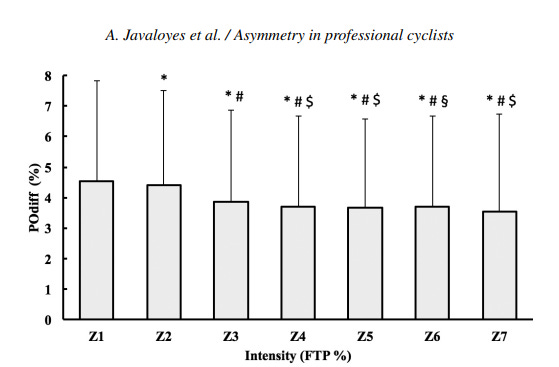I am skewed
About L/R power imbalance
A few months ago I changed to Favero Assioma Duo power meter pedals. I have always been using left crank only power meters. Mainly because of price and convenience – I have multiple bikes and didn’t want to swap pedals for every ride nor invest in a separate pair of power meter pedals for every bike. So I had 3 left crank power meters. However, being an elite indoor e-sports cyclist my dual recordings – dual recording is part of performance verification – are holy. So I went with the upgrade and got a pair of Assiomas.
New data unlocked
First off, they are great (nospon). They rarely vary >0.5% from the power readings on my Wahoo Kickr v6 bike trainer. Extremely satisfying. Only recently I discovered (yes I know, you have higher expectations of me🤓), that I need to turn on dual channel in the app to actually get L/R and cycling dynamics data on my Garmin head unit.
So that’s what I did. After doing my first ride with the L/R-balance data I ran into quite a shocker. Left/right-balance: 56/44%. Pardon me. The rides that followed didn’t vary much, each of them showing a consistent 3–4% imbalance between my left and right leg. I already suspected a slight imbalance as my left crank powermeter was always over-reading compared to my Kickr trainer – especially in the lower power regions (an important detail, more on that later). Additionally, I have a small difference in leg length. Nevertheless, 56/44 is beyond what I expected.
How bad is it?
Being the type of person I am, I dove into this. How common is a L/R imbalance and how bad is mine? Some googling soon taught me that 56/44% is definitely on the higher end. But power imbalances are not uncommon. A study among 112 pro cyclists competing in two editions of the Giro d’Italia showed that also among pro cyclists, power imbalances are very common.

It also becomes clear that power imbalance tends to decrease when intensity increases. This is quite common and also a crucial metric you should check when looking into power imbalances. It should even out when you ride harder.
As a good rule of thumb – if there is a difference between legs and this doesn’t improve as you ride harder then it might be a good idea to go and see a good local bike fitter. ~ James Spragg in Cycling Weekly.
That’s also the first thing I checked after seeing my rather big power imbalance. Fortunately, it approaches 51/49 when working on and above my FTP. So I am not too worried about it. Additionally, there are cyclists noting that their imbalance evens out as fatigue (e.g. duration of the ride) increases.
Can (and should) I be fixed?
There are multiple ways to fix power imbalances. Single leg drills on the bike, mobility exercises, targeted strength training and working with professionals like physiotherapists and bike fitters can help. I will look into these options! It is not likely that I will ever be a perfect 50/50. But won’t hurt to be more balanced on the bike 🧘.
At least, I have another metric to watch.




